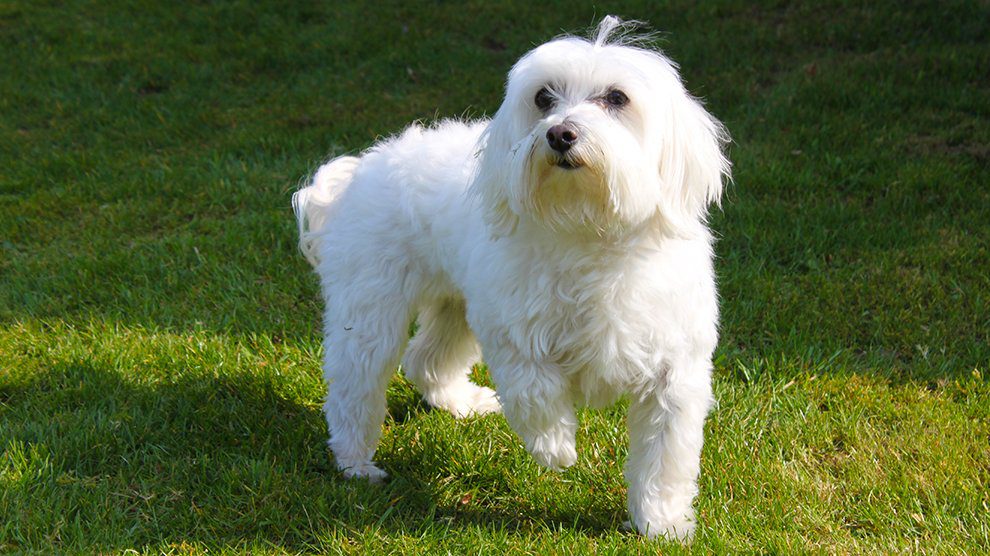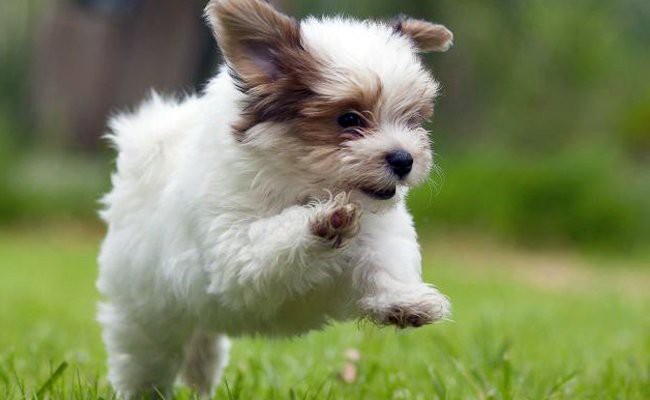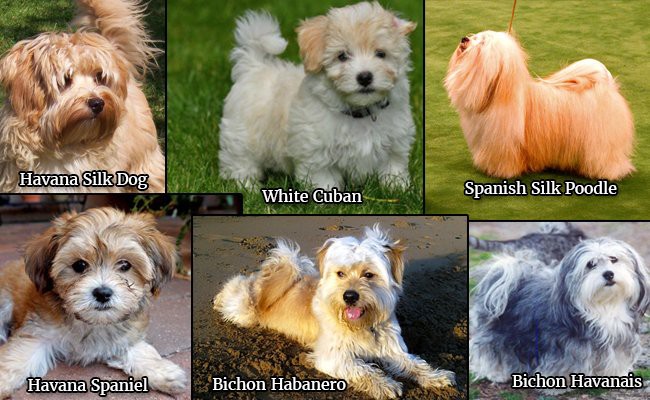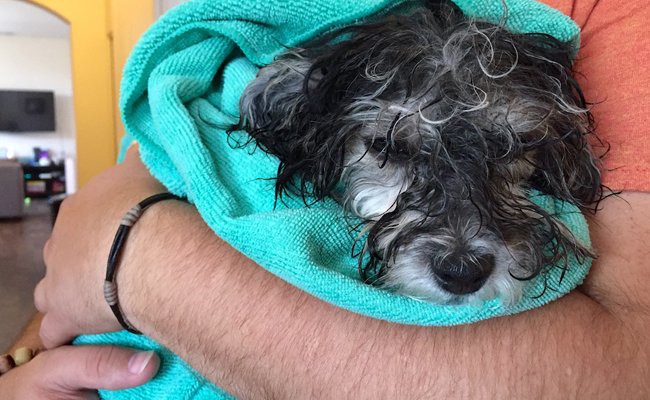Dog Pregnancy Calculator And Timeline
Havanese dogs belong to the Bichon dog breed. The name Havana was coined after the capital city of Cuba. American breeders started to show interest in Havanese Puppies during the 1970s.
Divided opinions regarding its place of origin remain where a section of masses state it’s from Malta whereas others say it is from Tenerife Island. During the Cuban Revolution, the higher income Cuban people fled to the United States but didn’t carry their dogs.
Moreover, the American Kennel Club officially recognized the Havanese breed in 1996. During 2013, the American Kennel Club ranked it in the 25th position for its popularity in the United States.
Havanese Puppies Origin
Havanese puppies are largely believed to have its ancestry from Cuba. Despite various opinions that remain about the real origin of Bichon breed dogs, the Havanese dogs from Bichon breed were good mates to the Spanish colonists in Cuba and held in high esteem for its dignity.
Havanese dog (from the Bichon breed) is the national dog of Cuba and significantly, its evolution started from the ‘Blanguito de la Habana’ which means the “little white dog of Havana”. The latter dog is no longer in existence.
Blanquito is also a descendant of the extinct Bichon Tenerife family.
Havanese Dogs Lifespan
The lifetime of a Havanese dog is between 14 to 16 years. It might also slightly vary.
Havanese Size
Havanese Full Grown
Havanese puppies have a stockily built look. The average height of a Havanese dog is somewhere between 23 cm to 28 cm.
The Havanese dog looks a bit wider in size rather being tall due to its body structure, which when measured from its shoulder to the buttocks is a trifle lengthier compared to its height at the withers.
It is actually the long ribcage of this dog which is responsible for showing the length of the dog’s body and not due to its loins.
Havanese Coat Colors
The Havanese puppies are small in size and also sturdy in structure with a tail carried over its back and ears that drop and fold. The Havanese puppies have dark brown eyes and almond-shaped lids surrounded by black pigment.
Although some arguments remain on whether the original Havanese Puppies were all white or of different colors, modern Havanese is notable and accepted in all coat colors. The coat is abundant, long, and silky and also comes in all colors.
All colored dogs have a black nose and black pigment around the eyes except for chocolate (brown) dogs, which may have dark brown pigment on their nose. If observed closely, these dogs have a similar length from their foot to elbow and from the elbow to withers.
These dogs have a very easily noticeable forecast. When this Havanese dog stands in an upright position, it projects to have a deeper chest and it is due to its sternum that aligns with its elbows.
Its abdomen is in a fairly normal position while its ribs have a rounded appearance.
Havanese Temperament
A Havanese dog is a toy dog that is smart and one can train it from a young age itself. It displays a great deal of loyalty to its owner and become closely affiliated with a specific person in the family.
When compared with other dog breeds, these dogs do not need rigorous training and exercises. Some amount of exercise is indeed necessary for it to maintain its health and relaxed mindset.
It is a friendly natured dog and normally does not bark at strangers. The Havanese puppies also wish to play outdoors and be amidst those people. This breed shows good affiliation and seeks to get the attention of others.
It can display a natural bonding with its owners and it can reciprocate their good sentiments. It can get along with people of all ages and can live in any kind of home setting.
Havanese Dogs Types
Interesting Facts on Havanese Puppies
Havanese dogs were actually first bred in Europe and were called as White Cubans. It was both a pet and working dog. Due to its diminution of fame as a pet dog, people use it only as a trick or circus dog across Europe.
Havanese dogs belong to the Bichon family. The Bichon family of dogs comprise Maltese, Bolognese and Bichon Frise.
Bichon breed of dogs is now globally recognized and is attracting many people but its breeding had originated in the Mediterranean region.
The Spanish settlers had landed in Cuba, the Carribean island during the 18th century along with these Bichon breed dogs.
It was during this time that the Havanese breed was developed in line with the Cuban style wherein it had that unique appearance of a silky, insulating coat and tolerance for heat.
It was bred with some array of colors instead of the normal white color found in other Bichon breeds. Havanese dogs are considered to be the only breed, to have originated from Cuba.
During 1959, when the Cuban revolution happened, some Havanese dogs were carried along by certain Cuban refugees, who had to face the compulsory situation of exiting the country.
As an aftermath, the 11 refugees lay their foot in the United States along with their Havanese dog. After a passage of time, during the year 1979, the prominence of Havanese dogs began and this resulted in the emergence of Havanese Club of America.
It is widely believed that the Havanese dogs presently growing in the United States are descendants of those 11 dogs that had fled from Cuba.
Despite their small size, these dogs must be made to exercise in the form of walking and outdoor playtime activities. This must be done by the owners only in a fenced or secure area with continual monitoring.
It is necessary that the Havanese dog is subject to consistent brushing, combing and clipping so as to keep its skin or coat with that same fantastic look.
Although the Havanese is quite intelligent and can absorb all kinds of training that are given, it is a very slow learner when it comes to house training.
The Havanese dogs can live in all sorts of houses ranging from an apartment to a house with large yards.
This dog has a very good affiliation or attachment with all the members of a family. It hates loneliness wherein this could test its temper.
Some celebrities who owned the Havanese dogs were: Queen Victoria, Queen Anne, Barbara Walters, Venus Williams and Joan Rivers, Ernest Hemingway and Charles Dickens.
Havanese Puppies Care
There are a series of steps to be followed in the take care process of growing Havanese dogs, such as:
How to feed Your Havanese?
With respect to feeding Havanese,
- Pick the right food for your Havanese after consulting a suitable pet nutrition expert for the same.
- Create a clear feeding schedule
- Give lots of clear and fresh water to the Havanese
- Ensure that the Havanese is kept away from toxic human foods
- Give it some real and healthy foods like sweet potato, carrot etc
Groom Your Havanese
- Maintain the habit of cleaning up your dog’s teeth at least once in a week
- Bathe your Havanese whenever required
- Check and clean the ears of Havanese’s ears at regular intervals
- Don’t allow to grow the hairs of the Havanese over its eyes
- Brush the coat of the Havanese at least once in a week
- Trim the nails of your Havanese
Entertain and Train Your Havanese
- Try to spend some time daily, for playing with your Havanese
- Give proper potty training
- Crate train your Havanese
- Try to teach socializing for your Havanese at an early stage
- Teach some basic commands to the Havanese.
Protect Your Havanese
- Spay or neuter the Havanese
- Get a collar and ID tag for your Havanese
- Try to keep your Havanese indoors to the maximum possible
- In addition, Take your Havanese for regular veterinary check-ups
- Have the fundamental understanding that Havanese can be prone to certain diseases that attack a specific breed
Havanese Health Problems
Havanese dogs suffer mainly from diseases, such as luxating patella, liver disease, heart disease, cataracts and retinal dysplasia.
1. Luxating patella
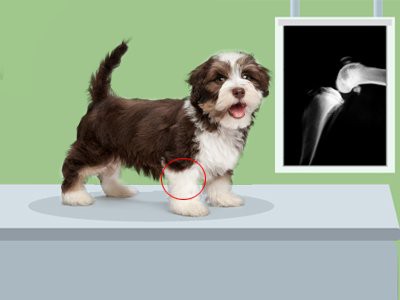
The symptoms of patellar luxation will differ based on the cause and the grade of this disease. The usual symptoms seen in a Havanese dog suffering from this condition are:
- Reluctance to exercise
- Limping with either one or both of its legs
- Pain when moving the leg and in extreme cases, crying out
- Difficulty in bending the knee
- Show restraint from running or jumping
- Swelling
The veterinary doctor will delve into the level of injury in the Havanese dog and the reason for the occurrence of this disease. Then, he will decide on the best course of action and it may be:
- Fit a leg brace or bandage or cage rest
- Apply medications such as NSAIDs, narcotics and Steroids are given for reducing pain and inflammation. Some supplements like Vitamin C, Vitamin E, collagen injections and glucosamine could also be utilized for effectively managing the pain.
- Employ surgical methods after carefully studying the reasons for the occurrence of patellar luxation and the grade of this disease.
- To summarize, the methods consist of: using fascial release incisions on the side of the knee or knees affected, inserting pins into the tibia to create a fixed position, soft tissue realignment or bone shaping to deepen the groove of the femur.
2. Liver disease
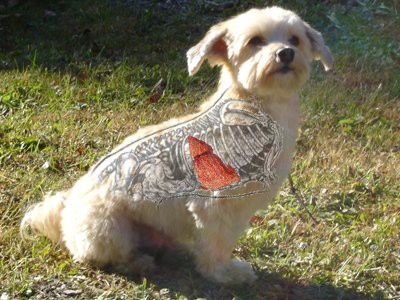
There are many functions that are performed by a liver right from metabolism, temperature regulation, circulation, detoxification and waste removal.
A Havanese dog that is affected by the liver disease will not be able to do the said activities whereby this will result in gradual non-detoxification of blood circulating freely through the body.
This will end up in poisoning the cells and tissues in its body. The aftermath of poisoning will cease the dog from doing its normal bodily activities leading to signs like vomiting, low weight gain, sleepiness, seizures, blindness, and failure to thrive.
Careful breeding of these dogs is instrumental in largely regulating these problems. However, it is seen mostly that medicinal treatment is a very costly exercise and very minimal success has happened.
However, the adoption of surgical treatment can succeed depending on the intensity and location of the shunt.
3. Heart disease

Havanese puppies get heart disease due to genetic reasons. The disease could begin at an early age but however, the symptoms proliferate over many years and the condition becomes severe.
The symptoms of heart disease constitute fatigue, mystic lethargy, cough, sudden weight loss, and cough. Apparently, medications do not really work in a large way of treating and curing the heart disease in Havanese dogs.
This treatment can simply lessen the rising level of failure of the heart. Veterinary surgeon may perform surgery only after carefully considering many factors like the health of the dog and the level of damage in the heart.
4. Cataracts

Cataract is a disease in the Havanese puppies in either one or two eyes at any age during its life.
The symptoms that occur are:
- White cloudy appearance in the eye
- Abnormal appearance in the light reflection in the eye
- Grey/light blue/abnormal coloration in the eye
- The signs of vision loss during cataract condition in a Havanese dog are: clumsiness, exercising extreme caution while walking, bumping into furniture and door frames and walking with nose to the ground
The treatment for cataract is a sheer surgical removal of lens and capsule from the eye globe. Thereafter, they replace the lens with a plastic or acrylic intraocular implant.
Phacoemulsification is another surgery done by applying ultrasonic waves where the emulsified lens is eliminated via aspiration and replaced with an isotonic solution.
Mostly, this surgery succeeds and the dog will be required to wear an Elizabethan collar (e-collar) to avoid it from rubbing its eye/s with its paw or on the floor. In addition, Vets prescribe some eye drops, ointment, pain, oral antibiotics and pain medications.
5. Cherry Eye
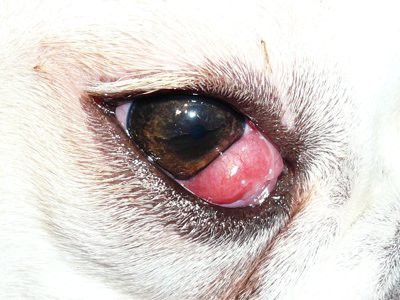
Symptoms
The foremost sign of cherry eye in a Havanese dog is the appearance of a round fleshy mass through medial canthus of the eye that looks like a cherry fruit. This mass can appear on either one or two of the eyes.
The other main symptoms of the cherry eye are abnormal tear production besides drainage from the eye.
Treatment
After the comprehensive analysis, Vets may decide about surgical or non-surgical methods. When detected at an early stage, you can treat the cherry eye in a Havanese dog through medication and slight physical manual message manipulation.
Only if there is a need, doctors may advise for antibiotics and steroids. Usually, they deploy surgical methods for correcting the cherry eye where they do the grand replacement by anchoring the membrane to the orbital rim.
Classes of surgeries are anchoring and pocket/envelope procedures. Anchoring method is about suturing the gland to the globe. Pocket/envelope method involves suturing the tissue around the prolapsed encasing it in a layer of conjunctiva.
6. Retinal Dysplasia
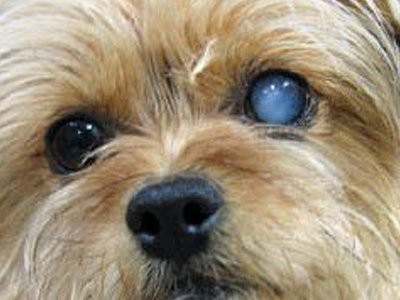
Havanese puppies suffering from retinal dysplasia will show the disease symptoms through its behavioural changes that can be:
- Showing tentativeness to walk into hallways or dark rooms
- Problems in identifying objects or people
- Colour changes happen its eye/s
- Bumping into various objects due to the failing of vision
- Unwillingness to climb and alight the stairs
- Reluctance to jump down off a ridge
Actually, there is no treatment available for this disease until now. The only effective way out is to not breed the Havanese breed dog since the genes will be passed on to the next generation.
There are some antioxidant supplements to decelerate the speed of retinal damage only after having the consent of the veterinarian. We cannot clearly decipher the retinal dysplasia at the time of birth.
In an extreme grade, you can provide only effective supportive care to reduce pain.
7. Chondrodysplasia
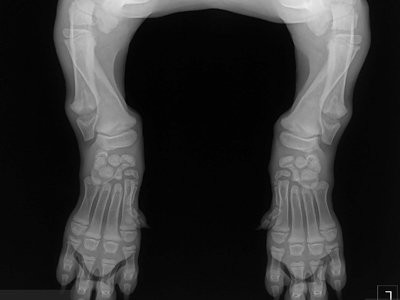
Chondrodysplasia is a common genetic disorder in many dog breeds, including Havanese. The main symptoms of this genetic disease are abnormal short limbs, enlarged joints, teeth crowding and poor growth.
For this reason, the vets adopt surgical treatment in severe cases to mainly straighten its bent legs to resurrect the normal functioning of legs.
This is a genetic disorder and so other methods of treatment cannot correct this disease.
8. Ear Deafness
Ear deafness in Havanese breed dogs is either congenital or hereditary.
The symptoms of deafness will show up in a Havanese dog once there is a damage to its ear structure that comprises nerves, cartilage, tissues, and bones. This causes difficulty for the dog to coordinate with the brain to really conduct and interpret sound.
Likewise, many chronic ear infections and brain disease like tumours that damage the tympanum of the inner or middle ear of the dog will result in the dog becoming temporarily or permanently deaf.
Despite the availability of antibiotics or anti-inflammatory medicines, the damage done to its ears is difficult to rectify. Good training and communication methods will be of immense help to deaf dogs, including Havanese breed.
Ear deafness in dogs is very difficult to cure completely.
Havanese Dogs Price
You can buy a purebred Havanese puppy in the USA at a price of around $1000 to $1500. There are varied reasons for this price, mainly the location of the pup and AKC certification.
You can even get some discount price but the Havanese puppy will not complete its normal or average longevity. It is necessary to find the most credible breeder to buy a purebred puppy since he/she will most probably be having complete details about the Havanese puppy.
Havanese Dogs Breeders
The addresses of some leading breeders in the USA:
♥ California
- Nevena’s Truelove Havanese
Address: Fall Brook, California
right off the intersection of I-15 & Hwy 76,
halfway between Escondido and Temecula,
Email: hevenahavanese@gmail.com - Los Arriba Havanese
Address: 7486 N. Fresno Street
Fresno, CA 93720
Tel Nos: 559.681.5582 or 559.224.6677
♥ Texas
- Enchanted Pearls Havanese
Address: 13910 Conner Park Dr
Cypress, TX 77429
Tel.: 832-755-1095
E-mail: martika@benedek-investments.com - Kondo LLC
Address: Canton, TX 75103
Tel: 1-903-385-5577
♥ Florida
- Hola Havanese
Address: Crystal River, Florida
Tel: (352)817-0270
E-mail: beachbaby1950@yahoo.com - Royal Flush Havanese
Address: 95 Old Coach Rd,
Charlestown RI 02813
Tel: 401-864-3371
E-mail: holly@royalflushhavanese.com

